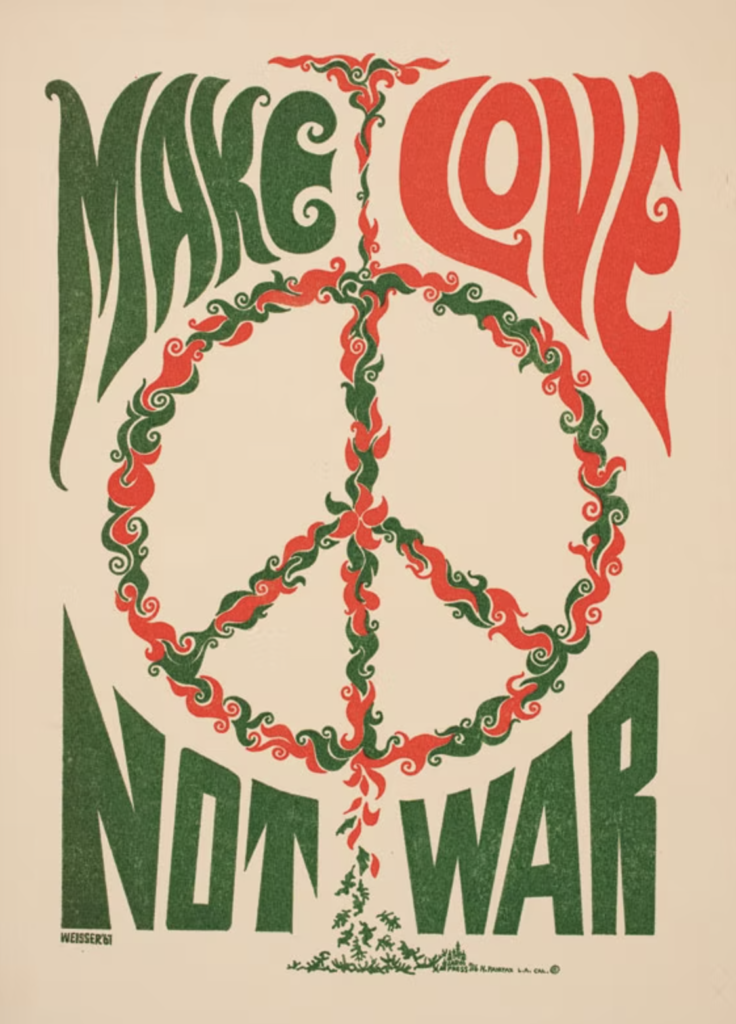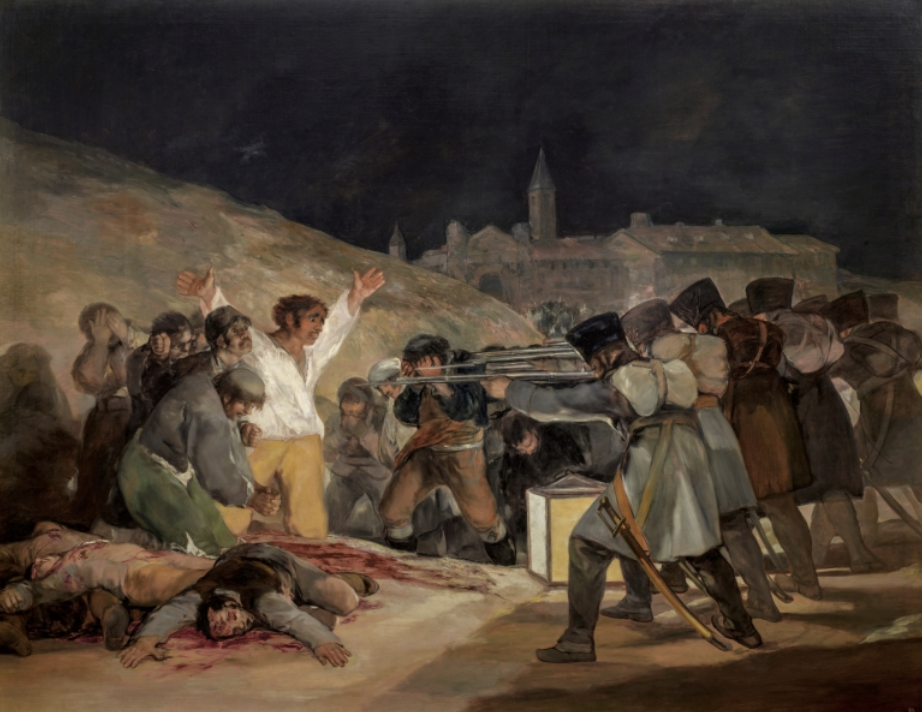Hippies – A Generation to Remember
We often question our lifestyle to find answers related to who we are and what is the meaning of our short presence in this world. Sometimes society provides for us, someone tells us since birth what to eat, what to do, where to go, and so on. Other times, some of us try to find answers differently. In the tumultuous history of the United States, there was a time when people inspired people. They looked at their forerunners and did not like what they saw. From private to public life, social constraints diminished the joy of living. One famous generation born just after WWII dared to stand aside and defy society. These are the exhilarating and transforming years dominated by the hippie movement.
GET MORE FROM LEVEL

The vivid 1960s and 1970s are kept in our memory as the times when people truly felt free and had a choice. This generation succeeded to change the world’s trajectory and encourage social reforms. Their ideology gave birth to a multitude of life approaches – meaningful, healthier, thoughtful. Born to promote peace, individualism, and ecology, the hippy movement made it to the front page of the papers and had an important role in defining a new type of society – anti-consumerist, anti-war, anti-materialistic.
Originating on college campuses across the US and self-declared as an anti-war action, the “hip” movement quickly spread to other English-speaking countries, such as Britain and Canada. It soon became a style of life, modern, fresh, supporting freedom, peace, and nature caring. It was hippie culture’s purposeful efforts that created a pro-environment movement, including the establishment of an exponential celebration – Earth Day. The establishment of Earth Day was first celebrated on April 22, 1970, when approximately 20 million Americans participated in several events across the United States. Their philosophy of caring for the Earth managed to survive throughout the years, strongly influencing future decades and even the present day.

Counterculture movement or hippy movement
For 20 years the hippy movement was seen mostly as counterculture because it rejected most ideas praised by the government. “Tree huggers”, “visionaries”, “freaks”, ”flower children” or “love child” are some of the most common names today to identify the rebellious youth that stood for peace and love in the world. The term hippy was conceived by San Francisco’s local media and was not positively received by its embrassers.
However, the association between hippie and counterculture movements emerged as they had similar beliefs. The main difference was that although most youths accused much of the social and political norms of the times, hippies were not literally activists or protestors like counterculture members were. As both movements came to light in the 1960s, distinguishing which is more politically active was difficult for the average person. The historical resources indicate two groups actively involved in protests and with radical points of view, the “Diggers” and the “Yippies”.
Opposed to this, the original hippies defined themselves as persons with anti-conventional values that deny the social status of the generations before them and sought freedom and equilibrium, even if this meant making use of hallucinogenic drugs.

“Make love not war”
A worldwide famous slogan emerged in the 1960s that perfectly describes the hippy lifestyle. “Make love not war” was like a sparkle that reached out to all adepts of the movement and became an iconic verse and image of the hippies opposing the war. The slogan embodied not only the aspirations of some anti-conventional persons but of an entire generation which established the grounds for many nowadays ecological movements.
Known as the “baby boom” generation, the children that reached their 20s by 1960, felt alienated from middle-class society. They accused their parents’ and grandparents’ lifestyles of being too materialistic and dominated by repression. Overconsumption of material goods caused damage to our planet, so hippies often adopted a vegetarian diet, preferred holistic medicine, and favored a different look with long hair, colorful second-hand clothes, and experimenting with communal living arrangements.
Hippies were exponents of nonviolent methods, they advocated for love and tolerance. Hippies were particularly attracted by Buddhism and Hinduism which practiced different types of religion based on spiritual development. Music was an important part of the movement and names such as Bob Dylan and Joan Baez were closely linked to it. Public gatherings and music festivals were one popular way of celebrating life, initiating the famous “Summer of Love”, in 1967.
Hippie peace sign
Hippies did not make a symbol for themselves with a special purpose in the public space but rather identified with an existing one, which described the anti-war symbolistic. In 1958 Gerald Holtom designed for the British Campaign for Nuclear Disarmament a peace sign that would later become the international symbol of peace. A vertical line with downward lines on either side endorsed in a circle represents the letters “N” and “D” for nuclear disarmament, while also referring to Goya’s painting “The third of May 1808”, a disparate situation when an individual’s hands palm are outstretched outwards and downwards. The symbol is based on the naval semaphore flags, which are used by sailors to communicate. The hippies adopted this symbol as representative of their anti-war fight and wore it in public. For them, the peace symbol and other international signs were means to achieve balance and interior tranquility.
The peace symbol has migrated from hippies to punk culture to contemporary fashion. Designers used it on shoes, T-shirts, dresses, and jewelry. This wider message of peace was accepted by everyone and today is often used by anti-war activists across the globe. It is an intricate part of pop culture that raises nostalgia and is considered “cool” by most youngsters.

Consumption, overconsumption, and drug consumption
Social norms defined the proper way of life, for both women and men. Until after WWII, the ideal woman epitomized a caring housewife, who cleaned the home, cooked for her family, and looked after the children. The husband needed to have a steady job and be the main provider of the family. Overall, society encouraged consumption through a large production of goods, houses to be sold, and all kinds of appliances necessary to modernize every American home.
With stable jobs and consumer credit availability for the population to buy more things, consumerism reached a peak in the 1950s. The promotion of the ideology of buying “more, newer, and better” was embraced by all media channels and approved by the government and society. This abundance of things that defined the social standards of the times, had become a hollow shell for the new generation, without meaning, purpose, or real ethical principles.
As a reaction to the (over)consumption, hippies chose to liberate themselves from restrictions, and materialistic chains and live freely in communion with nature. Complementing the idea of freedom, other types of consumption were favored. Known to be used for recreational purposes, hippies promoted the consumption of hallucinogenic drugs, including marijuana and LSD (lysergic acid diethylamide). The main motivation was to help the hippy followers to expand their consciousness, obtain enlightenment, and increase sensual experiences. Considering how important drug use (and abuse) was to hippie culture, they were constantly fighting against drug law reforms, particularly those prohibiting marijuana. Hippies claimed that the average person had access to far worse drugs than marijuana, such as alcohol, barbiturates, or common pain reliefs.
Hippies were seen as people that quit their jobs and retreated from the common order. As a consequence, more and more people started to traverse the “hippie trail”. Up to 1978, approximately 100.000 overland travelers passed through Eastern Europe and Orient to reach India or Nepal. Nevertheless, the hippie actions and experiences did not always end well. The Monterey International Pop Festival in 1967 turned into chaos, crime, rape, and unsanitary conditions for the public. In 1969, at the free concert at Altamont Speedway musicians and spectators were beaten and one Black teenager was stabbed.
Hippie culture lives on
The movement initiated by the flower children had diminished by the mid-1970s. Hippies had prepared the grounds for a generation determined to become entrepreneurs and build successful careers. What they achieved in the 60s and the 70s was deeply influential and one of the most powerful student demonstrations in American history. Nonconformist behavior, disapproval of traditional norms, and the anti-war point of view created a utopian perspective of life, encouraging love and peace at a level that echoes decades later.

Leave a Reply